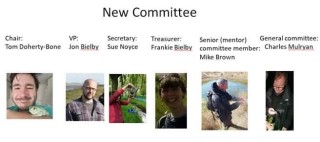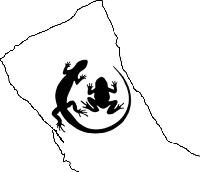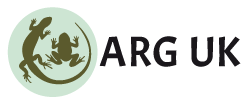About us
About Us
Aim
The aim of this group is to understand and protect the amphibians and reptiles of the Wirral peninsular through organizing training, raising awareness, surveys, habitat management tasks and other conservation activities.
Background
The Wirral Peninsular has historically been habitat of Sand Lizard, Natterjack, Great Crested Newt, Common Frog, Common Toad, Smooth Newt, Palmate Newt, Common Lizard, Slow Worm and Grass Snake. However, developments in the 20th Century has seen species such as the Sand Lizard and Natterjack disappear. Status of other herps have been uncertain, the problem being linked to lack of surveys and recording.
In 2018, preliminary surveys around Wallasey revealed many new and surprising records for amphibians and reptiles. This was part of the Cheshire & Wirral ARG. However, the size of this district with that county was too large, necessitating the formation of a new ARG for Wirral (WiARG) so more surveys and recording can be coordinated across this interesting peninsular.
Founding member and current Chair of WiARG, Tom Doherty-Bone, grew up on the Wirral and was frustrated by the lost herpetofauna species and limited opportunities to view the remaining herps in the area. Formation of this new ARG will create the opportunity for local residents in the Wirral to get involved with amphibian and reptile surveys and recording for both enjoyment of these wonderful animals and to aid in their conservation on the Wirral.
Activities
Since its formation in 2019, WiARG has undertaken numerous surveys and practical conservation tasks across the Wirral. Some of the highlights have been mapping out the extent of Common Lizard in Harrison Park, Wallasey, as well as lizards and amphibians across the North Wirral Coastal Park. Updating the known status of amphibians (including Great Crested Newt) at Royden Park and more recently measuring the use of the tidal zone of amphibians in the north west Wirral coast.
An outline itinerary for 2023-24 can be found under the 'Upcoming surveys' tab, suggestions from members are welcomed.
Existing partnerships include the Wirral Ranger Service, Cheshire Wildlife Trust, the Friends of the North Wirral Coastal Park and Wirral Wildlife.
Committee
The present committee consists of: Thomas Doherty-Bone (chair); Sue Noyce (secretary); Jon Bielby (vice chair); Frankie Bielby (treasurer); Charles Mulryan (general committee); Mike Brown (senior adviser).
Membership
The membership fee for 2023-24 is £5 (£2.50 for under 17s when accompanied by a guardian), which goes toward conservation activities of the group, such as buying equipment. Payment can either be made in cash, bank transfer or through Paypal: https://paypal.me/WiARG?locale.x=en_GB
Membership cycle runs from April to April.
Please get in contact if you wish to get involved.
News
News
2024 activities in more detail
2024 has been a busy year for WiARG.
Throughout 2024, there have been many group surveys across the Wirral, including on sites new to us. We have continued to encourage members to conduct independent surveys on their own ‘local patches’. We became involved in outreach events, attending the New Ferry Butterfly Park Open Day as well as holding our own annual stall in Central Park,Wallasey. We were also asked to aid in a few community projects.
One aspect that hasn’t changed are our Subs, they are still £5 (£2.50 for children) for a year’s worth of wellies ,mud, early starts and the anticipation of what will be in those traps!
School Projects
We helped create a new wildlife pond at SS Peter and Paul Primary School in New Brighton. This pond has since been used by frogs for breeding.
We were invited to go along to the Forest School based in Hayfield Special School, Upton to look at and advise on their wildlife pond, which we found unusual white smooth newts. The lead teacher, Donna, was wondering if some of their newts were white due to possible inbreeding. Our chair Tom, a qualified ecological scientist, confirmed that theory was probable, with the newt population possibly being isolated from others by urbanisation. The pond is small but absolutely brim-full of life, it is a wonderful resource that is used daily by the students. Unfortunately, the white newts weren’t out the day of the visit, so we’ll go back again during 2025. The site is a wonderfully diverse area which includes an area of woodland,a large meadow as well as the wildlife pond.
Wirral Parks
Royden Country Park
The new meadow pond (created 2022) is going from strength to strength with a large number of smooth newts found. Other ponds we surveyed are also showing improvement after previous habitat management, with the wet Spring and Summer meaning the ponds dried out less, allowing newts and frogs to develop from their tadpoles. We managed to get access to a new pond in the park and have planted it with native plants to enable newts to breed on them. Advice is ongoing to the ranger team for managing the park for amphibians and reptiles. Central ParkAs with every year, there were a large number of frogs and plenty of spawn in spring. The yellow-bellied turtle has been putting in regular appearances basking on the side of the pond – we are monitoring this potentially harmful invasive species, irresponsibly released by a pet owner. Our annual open day was well received, with many visitors interested to see what was in the pond this year. Our local biological records centre, RECORD, were in attendance too with plenty of activities available for wildlife in general.
Roman Road, Sandhills
We were invited asked to become involved the site with the Friends of Roman Road Sandhills. It was uncertain which amphibians and reptiles were still present in this green space, and whether the friends group could improve the existing habitat for them. We set up a monitoring system which was occasionally followed up. https://www.facebook.com/p/Friends-of-Roman-Road-Sandhills-61556011766803/
Prenton Rugby Club Community Hubhttps://www.facebook.com/prentondellclaypit/ We have been working in the Prenton Clay Pit Project at Prenton Rugby Club alongside their Community Hub’s volunteers. We were initially contacted by one of our members who had seen newts there whilst wandering through. We have since been involved in habitat management as well as surveying at their request. We have found Great Crested and Smooth Newts as well as plenty of Common Frogs and the occasional Common Toad across the entire site.
Chester RSPBhttps://www.facebook.com/RSPBChester/?locale=en_GB
Following a walk with the Chester birders during which the prospect of a joint survey event was discussed with Leasowe Lighthouse agreed as being a good site for both groups. This was brought up during the Chester RSPB AGM with members agreeing it would be a good opportunity to survey the area at Leasowe Lighthouse in more detail. Refugia were placed during an evening walk where a few toads were seen. These refugia were absent and will be replaced, though it is not unusual to find lizards basking there.
New Ferry Butterfly Park We were invited to attend the open day in May. It was an incredibly well-attended event with over 1000 people through the gates. We were close to the entrance and were busy with interested visitors over the day. https://www.facebook.com/events/934056881718877?locale=en_GB
Birkenhead Park We undertook a survey of the wildlife pond at Birkenhead Park. This is the one pond not used for fishing. While we did find frog tadpoles, there was also a prominent stickleback population, indicating it is not necessarily a prime breeding habitat for amphibians.
Bidston Golf Course The Wirral ARG was represented at the ecoschools day in March, getting 8 different school groups to work on habitat management at one pond and dipping in another. Refugia had been put down, with Common Toad found using the site.
Red Rocks Nature Reserve In partnership with the Cheshire Wildlife Trust, we had an evening guided walk around Red Rocks Nature Reserve, Hoylake. This is the only site on the Wirral with Natterjack Toad. The Spring storm surges had made the Natterjack hideaway during the walk, but the event was still an enjoyable introduction to the site, with Common Toad tadpoles found, as well as other pond life and wildlife.
2024 - A summary of a busy year
Throughout 2024, there have been many group surveys across the Wirral, including on sites new to us. We have continued to encourage members to conduct independent surveys on their own ‘local patches’.
We became involved in outreach events, attending the New Ferry Butterfly Park Open Day as well as holding our own annual stall in Central Park, Wallasey. We were also asked to aid in a few community projects.
One aspect that hasn’t changed are our subs, they are still £5 (£2.50 for children) for a year’s worth of wellies ,mud, early starts and the anticipation of what will be in those traps!
Notice of Annual General Meeting and Survey Training Session Sat 25th November Royden Park
We will be having our Annual General Meeting at 2 pm on Saturday the 25th November at Royden Park's hall by the cafe.
There will be a training session at 1 pm, going over the basics of amphibian & reptile surveys. This will include basic biology and ecology of the UK amphibians and reptiles, how to set up a survey, and record data, including how to use the ARGWEB system. This provides members the opportunity to improve their skills and plan for the 2024 survey season. This is specifically for WiARG members, though non-members can participate if they join up on the day.
The AGM will start at 2pm
This is an opportunity for members to be voted into the committee and help drive the governance of this successful voluntary-run environmental group on the Wirral. There are openings for treasurer and data officer, as well as general committee posts suited for those seeking to understand the function of the group better. If you are interested, email Tom at tommy_dbone@yahoo.com
The AGM Agenda will be circulated on our social media platforms and can be emailed directly upon request.We look forward to seeing you on the day.
Grass Snake Reports in Ellesmere Port
There have been reports of Grass Snakes in the local press lately, which have still to be properly verified, however our chair Thomas Doherty-Bone has written a blog discussing this here: https://thomasdb.weebly.com/blog/snakes-in-the-grass-at-ellesmere-port-be-not-afraid-help-them
WiARG AGM 12/12/22
Minutes for Wirral ARG AGM 2022
Date: 12/12/2022
Venue: Ranger’s Mess, Dibbinsdale Local Nature Reserve
Committee: Thomas Doherty-Bone (chair), Charles Mulryan (committee member)
Other attendees: Georgie Hobson (member)
Apologies: Jon Bielby (vice president), Frances Bielby (acting treasurer), Mike Brown (mentor), Sue
Noyce (secretary – at last minute due to being delayed by winter disruptions to public transport)
Meeting content:
Acknowledgment and thanks are due to Wirral Borough Council ranger Russ Cottrell for helping
organise the venue, with invitation extended to us to use it in future.
This meeting was under-attended, disappointing but understandable given the time of year. It is
noted efforts had been made earlier in 2022 to organise a meeting but venues were proving difficult.
This apparently became worse as council-run community halls were deliberately closing in evenings
for cost-cutting on electricity and gas.
TDB gave a presentation (on a projector kindly provisioned by G. Hobson) on the progress and
achievement of the Wirral ARG (WiARG) for 2022, with plans for 2023 laid out. See below for details.
For 2022, the records showed 17 paid members, but 30 on the email list. Care may need to be taken
for when members pay in cash, with diligence to note it down in good time. The accounts ending
April 2022 were presented with £48.92 taken in, £3.38 only paid on materials leaving £272.46 in the
bank that includes funds from previous years.
The current balance is £78.00, with that financial
report for 2022-23 due this April.
The meeting was then opened to rest attendees.
Activities for 2022 included:
- Jan-May - continuing to monitor amphibians (especially Great Crested Newt) at Royden
Park, including overseeing the creation of a new pond;
- Feb-Aug - pond management at Eastham Country Park with follow up torch surveys;
- Mar-June- surveys and litter picks at Central Park Wallasey, including an outreach day;
- Apr-May - prospective surveys at Rendova Farm at the Cheshire-Wirral boundary;
- May - a prospective survey of Wirral Country Park;
- Jun - rapid surveys of the pond at Irby Mill in response to potential illegal activity;
- Jun-Sep - setting up reptile surveys are Thurstaston Common with Natasha Murwill as
part of her masters at Manchester Metropolitan University;
- Apr-May - surveying Heswall Golf Course;
- May-Sep - surveying Wallasey Golf Course;
- Jul-Sep - continuing the study of amphibian use of habitat around Hoylake and West
Kirby, particularly Natterjack Toad.
Many other surveys were planned but not achieved due to time constraints and limited volunteers
taking the lead. For example, Ditton Lane at Moreton is still in dire need of surveying given the threat of development. Land owner permission had been secured, but it was unsurveyed. Furthersurveys at Frankby Cemetery were desired but did not take place. Surveys around North WirralCoastal Park were set up but not properly followed up, which is understandable but limits thecomparison to the Wallasey Golf Course surveys. Other new sites were surveyed by members, suchas Prenton Dell by the Paunells (Paul & Di), and more dedicated, intensive surveys are desired here,especially laying down of artificial refugia. The heatwaves of 2022 were particularly troubling, andmay have explained very low encounter rates of Common Lizard at numerous sites when surveyedand this is something that should be looked into further.
The main plans for 2023 are:-
Surveying Royden Park’s ponds to track the effectiveness of the past 3 year’s interventions;-
Set up surveys of Ditton Lane (Charles Mulryan offered to lead);- Set up surveys for Prenton Dell (possible Paul & Di Paunell to lead?);-
More pond management and follow-up surveys for Eastham Country Park;-
Continue monitoring of ponds at Central Park (Sue Noyce lead);-
Investigate the possibility of creating more ponds in New Brighton, especially aroundHarrison Park (no amphibians have ever been recorded there), which will also includefollow-up refugia and walk-over surveys;-
Organisation of an action plan workshop for Great Crested Newt on the Wirral (morerealistically from October 2023);-
Set up training sessions to empower members to take the lead on effective surveys,mostly likely for late March-early April;-
Plan further outreach events, which proved very successful in 2022;-
Administer the WiARG via the ARGWEB online portal to enable members to contribute more efficiently.
The surveys around Red Rocks and Hoylake Beach are now concluded and will be subjected to peer-
reviewed publication, with discussions to plan where to move forward on this. There may however
be opportunities for a group visit to Red Rocks with members in liaison with the Cheshire Wildlife
Trust.
Matters arising:
- Further surveys might be planned, but require input from members.
- The chair will be unable to devote as much time as before due to gradually relocating to
North Wales. Members need to start getting ready to receive the baton for leadership of the
ARG.
- No new volunteers for committee had come forward, nor were present committee members
requesting changes to their positions.
- This AGM, while not well attended, will be the milestone for 2021-2022, the next one will be
held much sooner in March/April 2023, which will be a mixture of training session and
survey at Dibbinsdale (Russ has offered the venue again) with the aim of recruiting new
members and empowering them to continue with surveys and other projects.
- End-
Committee Members
Committee Members

Upcoming Surveys
Upcoming Surveys
There are multiple surveys planned for Friday 24th May at Central Park, Birkenhead Park and Prenton Dell.
Each survey will consist of setting traps and torching ponds on Friday, then returning early on Saturday morning in order to empty the traps and record what's there. As with all surveys, appropriate clothing, water-proof shoes/boots and torches will be useful.
Please use the "check-clean-dry" technique with your outdoor gear for biosecurity. Likewise, if you keep amphibians and reptiles at home, probably use separate clothes if you have been handling or servicing them to save spreading exotic pathogens around.
Let us know if you are planning to attend.
Photo gallery
Photo Gallery
Upcoming Events
Upcoming events will be listed here.
Latest News
- 2024 activities in more detail
27/03/2025 12:35 pm - 2024 - A summary of a busy year
27/03/2025 12:19 pm - Notice of Annual General Meeting and Survey Training Session Sat 25th November Royden Park
28/10/2023 10:46 am - Grass Snake Reports in Ellesmere Port
04/05/2023 3:25 pm - WiARG AGM 12/12/22
06/03/2023 9:57 pm
© Wirral ARG (WiARG)
Website hits: 22183
View All | Find out how to get a mini-website for your ARG
© ARG UK Local Groups mini-websites 2025
Wind powered websites by Aye-aye Design.

